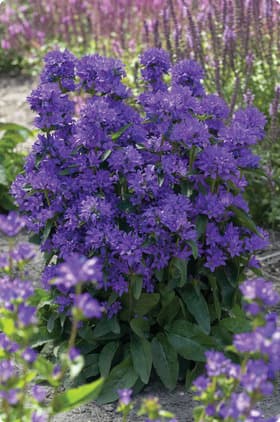Creating and Caring for Rock Gardens
Some people may call Rock Gardens “old fashioned”. Others, call them stylish and new. The truth of the matter is, rock gardens have been around for a long, long time. And, they’ve always been “in style”. Styles change. Designs may change. But, rock gardening has always been, and will always be, very popular among homeowners and home gardeners. The garden designs are limited only by your imagination. It may also be limited by your ability to move that big boulder to an appropriate location in your yard.
Homeowners and home gardeners place rock gardens in the front yard and the back yard. They create them along the house or garage, along a sidewalk, or set off in the yard by themselves. They also make an attractive garden berm. These gardens are often an integral part of the home landscape design.
The Basics of a Rock Garden
It’s real simple, a rock garden employs rocks to create a natural, decorative setting. You can use big rocks, small rocks, a matter of fact all kinds of rocks. Rocks come in unlimited shapes, and a wide range of natural, earth-tone colors. There is no right or wrong way to create these gardens. In creating a rock garden, there is no right or wrong. Take a big rock, or boulder, and build a flower garden around it. Or, you can use several rocks, to frame your flower garden. You can also use rocks to create a frame for a raised bed garden. Rock gardens are also popular on hillsides for terracing, and to stop soil erosion.
The second thing you need is flowers. Key characteristics for selecting flowers for your garden are:
Size- most rock gardens utilize smaller plants. In general, for big rocks, select bigger flowers. For small rocks, choose small flowers. The flowers should always be smaller than the rock. Flowers should accent the rocks, not hide them. And, by all means, don’t use large flowers that grow and hide the decorative rocks and boulder. obscure
Flower Colors- Here’s where the home gardener can get really creative and stylish. Select flower colors to compliment or contrast with the rock colors you have selected.
Perennials are the most popular flowers. They allow you to plant once, and the perennials will grow for years undisturbed with little attention. You can use herbs, too.
Plant pH Range – Rocks and the surrounding natural soil is often neutral to slightly alkaline. For the best performance, select plants that prefer slightly alkaline soil. If you bring in the soil to fill your garden, soil pH may not be an issue.

Selecting Flowers for Your Rock Garden
Flower selection should accent or highlight the rocks you have used to create the garden. The color shape and size of the rocks play a big part in deciding the best flowers for your garden. Think about contrasting or complimenting colors. Do you want the flowers to blend in, or stand out?
These flowers are great candidates:
Jacob’s Ladder
Miniature roses
Note: Almost any flower shows well around rocks and boulders. For example, we’ve seen Black-Eyed Susan and a variety of daisies perfectly adorning large boulders. Clumps of Ornamental Grasses look great around large boulders, too.
On occasion, a shrub may be used. Care should be taken, to assure to choose a shrub that fits the garden design, and does not overcrowd the setting, or other plants.
Related Articles
People who like this article will also like:
Improving Garden Soil – Fall is a great time to improve your soil. Find out how.
Please support our site. Shop for:
- rmmatthews100@hotmail.com
- 585-721-6528
- Rochester, NY
©1999-2024 GardenersNet.Com, All Rights Reserved

